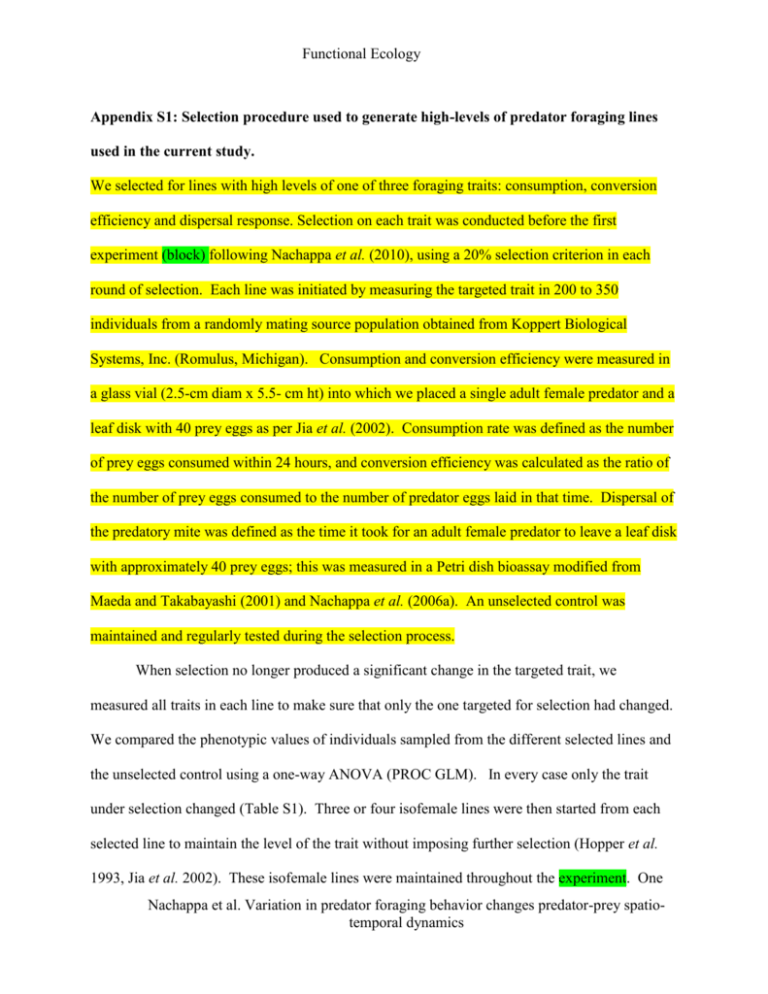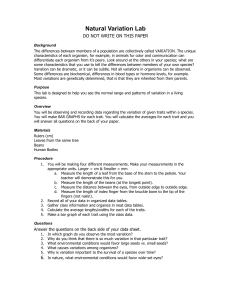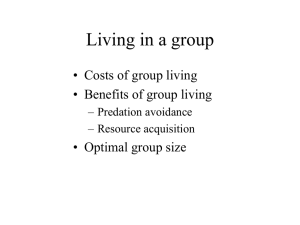FEC_1892_sm_AppendixS1
advertisement

Functional Ecology Appendix S1: Selection procedure used to generate high-levels of predator foraging lines used in the current study. We selected for lines with high levels of one of three foraging traits: consumption, conversion efficiency and dispersal response. Selection on each trait was conducted before the first experiment (block) following Nachappa et al. (2010), using a 20% selection criterion in each round of selection. Each line was initiated by measuring the targeted trait in 200 to 350 individuals from a randomly mating source population obtained from Koppert Biological Systems, Inc. (Romulus, Michigan). Consumption and conversion efficiency were measured in a glass vial (2.5-cm diam x 5.5- cm ht) into which we placed a single adult female predator and a leaf disk with 40 prey eggs as per Jia et al. (2002). Consumption rate was defined as the number of prey eggs consumed within 24 hours, and conversion efficiency was calculated as the ratio of the number of prey eggs consumed to the number of predator eggs laid in that time. Dispersal of the predatory mite was defined as the time it took for an adult female predator to leave a leaf disk with approximately 40 prey eggs; this was measured in a Petri dish bioassay modified from Maeda and Takabayashi (2001) and Nachappa et al. (2006a). An unselected control was maintained and regularly tested during the selection process. When selection no longer produced a significant change in the targeted trait, we measured all traits in each line to make sure that only the one targeted for selection had changed. We compared the phenotypic values of individuals sampled from the different selected lines and the unselected control using a one-way ANOVA (PROC GLM). In every case only the trait under selection changed (Table S1). Three or four isofemale lines were then started from each selected line to maintain the level of the trait without imposing further selection (Hopper et al. 1993, Jia et al. 2002). These isofemale lines were maintained throughout the experiment. One Nachappa et al. Variation in predator foraging behavior changes predator-prey spatiotemporal dynamics Functional Ecology to two months before starting each block, females from the isofemale lines for each trait were combined so lines could interbreed for two generations, at which time they were assayed to ensure they exhibited the desired level of the traits. Predators were collected from the plant arrays at the end of each block and again assayed to assess whether the level of the trait changed over the course of the block (Table S2). A one-way ANOVA was used to compare phenotypic values of each foraging trait between the start and end of each block. There were no significant changes in most blocks except conversion efficiency decreased (moved back towards the unselected value) during Blocks 1 and 3, and dispersal time decreased (moved further from the unselected value) in Block 3. However, the levels of these traits remained significantly different from the unselected control (Table S1 and Table S2). Nachappa et al. Variation in predator foraging behavior changes predator-prey spatiotemporal dynamics








